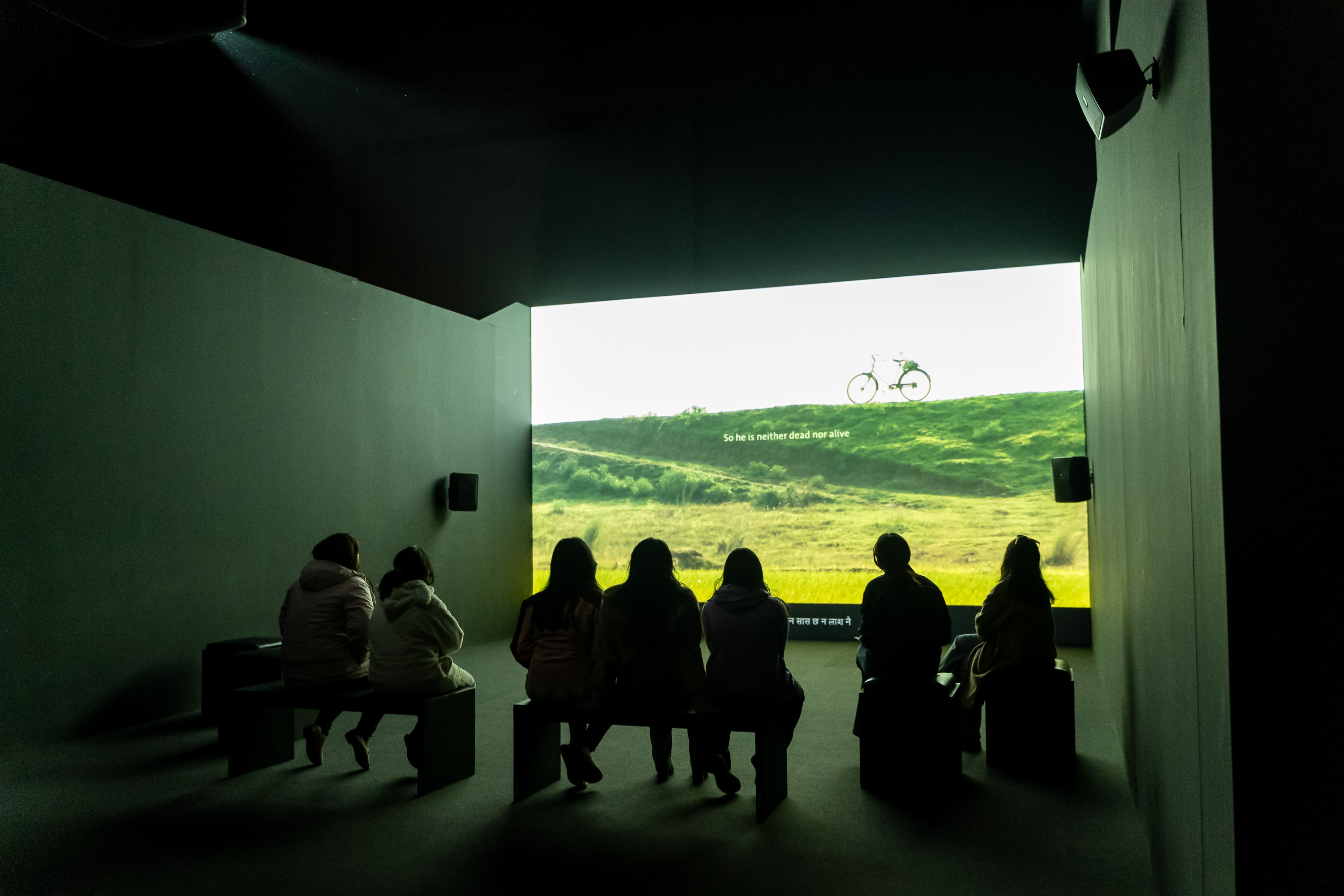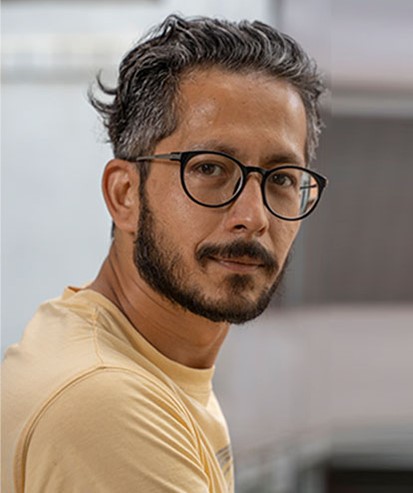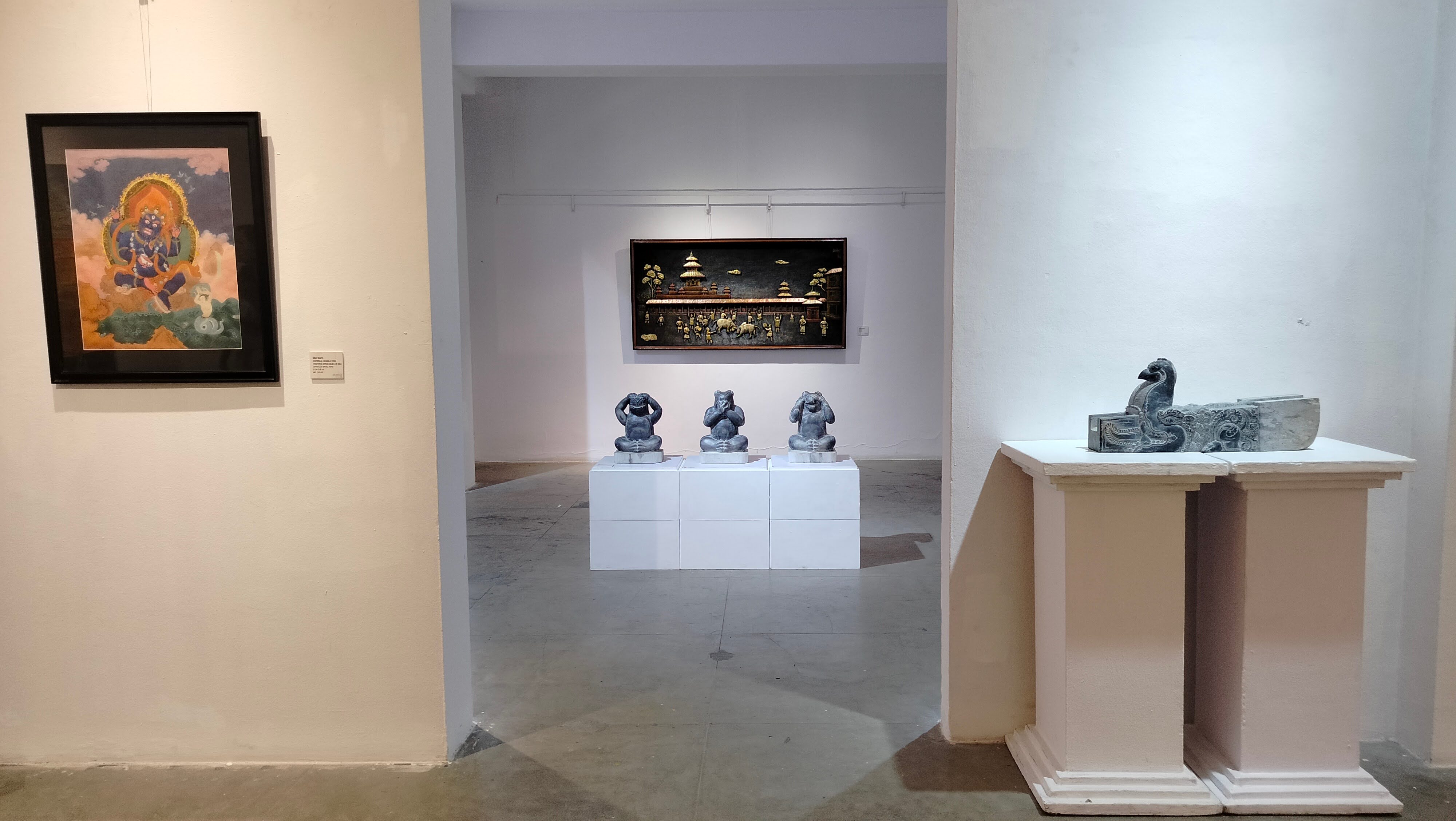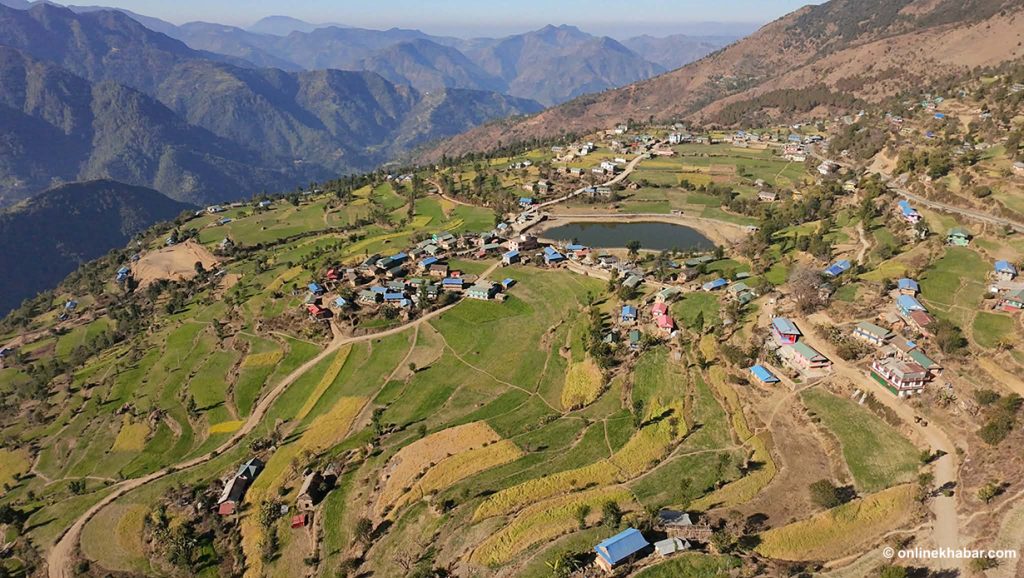
“I learned that the Indian state has been capturing land in Orissa – land inhabited by tribal and indigenous communities for generations – to industrialise it,” a Resource Person (RP) affiliated with Kathmandu Metropolitan City’s Education Department (KMC) shared.
About two dozen educationists, including a few principals of community schools, had assembled at the Nepal Art Council (NAC) during the first weekend of January to engage with Amar Kanwar’s ongoing exhibition, The Sovereign Forest (TSF). Organised by photo.circle, the exhibition opened in early December 2023 and is free for the public.
As part of outreach efforts, photo.circle co-founder NayanTara Gurung Kakshapati and I had met Shailendra Jha, who looks after KMC’s Education, Technology and Social Innovation wing and was a key advocate of KMC’s “text-book free Friday” drive, launched at the beginning of the school year.
We felt that The Sovereign Forest’s Guided Educational Tour programme would fit with KMC’s new initiative, which, according to a Kathmandu Post report, was implemented to teach essential life skills and various extracurricular activities. Towards the end of our discussion, the RP continued, “I’m also considering my pedagogical practices.” He spoke about the value of examining ideas and objects from multiple perspectives.
Multiplicities
Indeed, as opposed to a prescriptive approach functioning on a one-dimensional narrative plane, The Sovereign Forest’s usage of multimedia is almost mysterious, designed to evoke visitors’ emotions. There are no explanatory curatorial notes at the Nepal Art Council, not even an introductory panel.
But there is a long list acknowledging the contributions of Odia Journalists, including Sudhir Patnaik of Samadrusti, as well as Sherna Dastur; Kanwar’s The Sovereign Forest collaborators. Patnaik and his colleagues at Samadrusti conducted vital research work that shaped The Sovereign Forest, while Dastur worked closely with Kanwar to make three large handmade books out of banana and other fibre paper on which moving images are projected.
A rectangular room displays more than 270 varieties of indigenous, organic rice seeds, each labelled and meticulously listed in a Seed Book, a digital print. Copies of five other small books are placed at various points, containing texts in English and Nepali.
Upstairs, 177 digital prints – documentation by mostly Odia farmers – are interspersed with handwritten lists, maps, and newspaper cutouts. While sharing reflections during a Guided Educational Tour, a college student noticed how poetic verses are juxtaposed with memoranda, and political slogans with company profiles. Images flit from books to big screens.
“It felt like putting pieces of a jigsaw puzzle together,” they remarked. Several young people confessed that they were moved, bogged down by the despairing themes. It is a dark space, they had been warned, and the darkness was necessary, another student commented. Because then, the light becomes more prominent, illuminating voices and sounds often excluded from the mainstream.
A young man was stunned after discovering this completely separate world. There is so much happening that we are unaware of, he expressed. A response had been generated; and as educators and organisers, we can only hope that an emotional response in the present might inspire action in the future.
The Sovereign Forest is anchored in Orissa but it compels visitors to consider the interconnections between politics, human rights and ecology everywhere. Legal terms appear throughout the exhibition – crime, trial, evidence, constitution – to challenge literal meanings.

A 42-minute film is titled Scene of Crime, filled with images of Orissa’s natural beauty, from areas that have been (or soon to be) leased out by the government. “I’m thinking about power,” a young girl meekly spoke. “And how those in positions of power cannot be trusted completely.”
Is legally permissible evidence adequate to understand the extent and nature of a crime? asks Kanwar. How do we think of justice when the government itself passes laws to disenfranchise huge sections of the population?
In recent years, I had heard news bites about farmer suicides in India but it was only when I leafed through their portraits compiled in another small book that the depth and extent of the tragedy tugged at my heart.
The portrayal has aesthetic value but also serves as evidence of an unfolding; it’s an ode, a vigil, and a memorial all at once. That is why Kanwar is uncomfortable describing himself as (only) an artist. He maintains that The Sovereign Forest has overlapping identities. It is not just an exhibition but also a library and an archive.
The films, texts and audio installed inside sections and levels send visual and aural messages across the Council’s towering top floor, further facilitating myriad ways of connecting and making sense. The Sovereign Forest could also be a school, a proposition for a space that engages with education, politics and art.
New institutions and process

Can new temporary cultural institutions and processes be created to respond to this situation? Amar Kanwar asks. The ‘this’ in his question might refer to Orissa but we can also expand its scope to include the public and private education sectors.
On Saturday morning, the RP continued, “I connected my TSF experience to an incident that’s unfolding in Arughat, close to my hometown. About two dozen settlements along the Dhading/Gorkha border are getting displaced. We will soon lose their unique cultural practices and knowledge systems.”
Another educator used the phrase a paradigm shift in learning to describe their experience. Somebody mentioned the need to teach writing and research skills, acknowledging the limits of the curriculum, while another one commented on the value of the visual arts.
The responses were diverse because the tour allowed open exploration and questioning. Participants could follow their instincts, making meaningful connections. Guidance is provided and the closing discussion is emphasised, but we encourage participants to construct their knowledge freely.
As someone involved in the professional development of teachers, I am also concerned with activities aimed at changing behaviour and consciousness. And I believe that incorporating the arts into personal, educational and development projects is one way to go about that.
The Sovereign Forest’s Guided Educational Tour programme is only one example. The exhibition invites other collaborators, experimenters and visionaries. I am excited about the concept of submerged networks, introduced by Alberto Melucci in Nomads of the Present (1989), which surface to focus public attention on points of contention that are not taken up by conventional political forces and processes.
Nepali political leaders have only engaged superficially with educational policies; the issues are rarely prioritised during campaign trials. The Guided Educational Tour programme can provide access to a network and thus, can also be viewed as an adventure, an academic seminar, or an opportunity to appreciate the arts.
The possibilities for lesson planning are endless because the space is expansive and the design dynamic. In Discourses of Awareness, Tatsuro Fujikura writes, “In Nepal, there is a continuous need for interactive and reciprocal pedagogy,…a perspective or a critical attitude…that takes discussions about awareness and consciousness seriously.”
And what about the arts and its role in social change? In a recent interview, actor Willem Dafoe responded, “Anything that brings about a personal liberation from conditioning.”
The Sovereign Forest will continue until the end of March 2024.
























